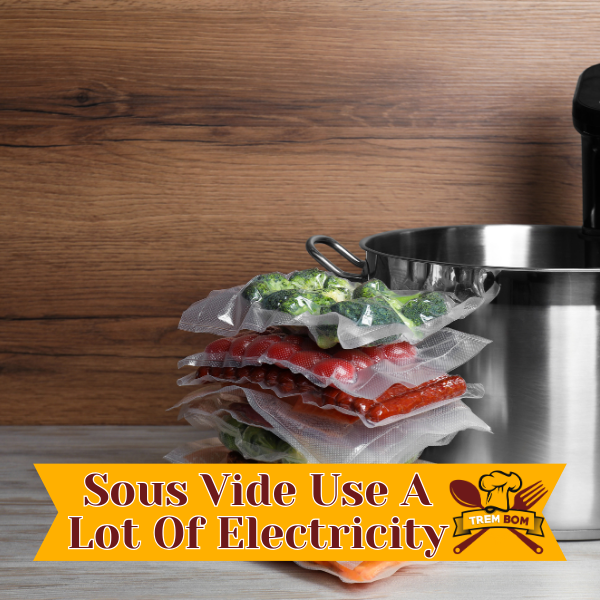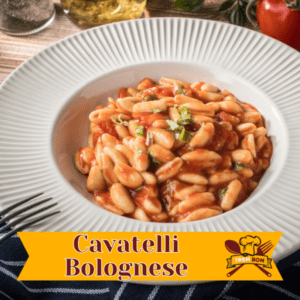
Welcome to our article where we explore the question, “Does sous vide use a lot of electricity?” If you’re curious about the energy usage of sous vide cooking and its impact on your electricity bill, you’ve come to the right place. In this article, we will provide you with a comprehensive understanding of sous vide cooking, delve into its power consumption, and discuss energy-efficient practices to help you optimize your cooking experience.
Key Takeaways:
- Sous vide cooking is a precision cooking method that involves vacuum-sealing food in a bag and cooking it in a water bath at a controlled temperature for an extended period.
- The power consumption of sous vide devices varies based on factors such as the model, cooking time, and temperature settings. However, sous vide cooking generally consumes less energy compared to traditional cooking methods, thanks to its efficient and precise heating process.
- While sous vide cooking is energy-efficient on its own, you can further reduce energy usage by following simple tips such as using well-insulated containers, preheating the water bath efficiently, and maximizing the use of residual heat.
- Calculating the electricity cost for sous vide cooking depends on factors like the wattage of your sous vide device, the duration of cooking, and your local electricity rates. By understanding these factors, you can estimate the long-term impact on your energy bill.
- When comparing sous vide cooking to other methods like oven baking or stovetop simmering, sous vide generally consumes less energy due to its precise temperature control and longer cooking times.
Understanding Sous Vide Cooking
Before we delve into the energy consumption aspect of sous vide cooking, let’s first understand what this precision cooking method is all about.
Sous vide cooking, which translates to “under vacuum” in French, involves vacuum-sealing food in a bag and then cooking it in a precisely controlled water bath at a low and consistent temperature.
This cooking technique has gained popularity among home cooks and professional chefs alike for its ability to deliver evenly cooked, tender, and flavorful results.
Sous vide cooking introduces a level of precision that is hard to achieve with traditional cooking methods. By cooking food at a precise temperature for an extended period, you can achieve the desired level of doneness while retaining the food’s moisture and natural flavors.
“Sous vide cooking allows for precise control over temperature, resulting in consistently perfect outcomes. It’s like having a personal chef in your kitchen!”
Unlike other cooking methods that rely on guesswork or experience, sous vide cooking takes away the guesswork and allows you to have more control over the final product. With the help of modern kitchen appliances such as immersion circulators or sous vide machines, you can achieve professional-level results in the comfort of your own kitchen.
During the sous vide cooking process, the food is vacuum-sealed in a bag, ensuring that flavors are enhanced and retained. This cooking method is particularly beneficial when cooking delicate proteins like fish or tender cuts of meat, as it prevents overcooking and maintains their natural texture.
Sous vide cooking also provides the flexibility of preparing meals in advance and finishing them just before serving. This makes it a convenient option for busy individuals or those who like to plan their meals ahead of time.
Now that we have a better understanding of what sous vide cooking is, let’s explore its energy consumption and the impact it may have on your electricity usage and bills.
| Advantages of Sous Vide Cooking | Disadvantages of Sous Vide Cooking |
|---|---|
| Consistent and precise results | Long cooking times |
| Retained moisture and flavors | Requires additional equipment |
| Convenient for meal planning | Initial investment cost |
| Minimal food shrinkage | Limited browning and maillard reactions |
How Sous Vide Works
In order to understand how sous vide cooking works, let’s take a look at the step-by-step process:
- Preparation: Season your ingredients and place them in a vacuum-sealed bag or airtight container. This ensures that the flavors are well-marinated and locked in during the cooking process.
- Vacuum sealing: If using a vacuum-sealed bag, remove all the air from the bag to create a tight seal. This not only enhances the food’s natural flavors but also promotes more even cooking.
- Water bath: Fill a large pot or a sous vide machine with water and set the temperature according to your desired doneness. Precision is key in sous vide cooking, as the water temperature determines the final outcome.
- Cooking: Submerge the sealed bags or containers into the water bath, making sure they are fully immersed. The low and consistent temperature of the water gently cooks the ingredients over an extended period of time.
- Finishing: Once the cooking time is up, remove the bags or containers from the water bath and transfer the ingredients to a hot pan or grill for a quick sear or char to add texture and color.
- Serving: Plate your perfectly cooked sous vide dish and enjoy the tender, flavorful results.
Compared to traditional cooking methods, sous vide offers several advantages. The gentle and precise cooking process ensures that the food retains its natural moisture and doesn’t dry out. The extended cooking time also allows for the breakdown of connective tissues, resulting in tender and juicy meats.
“Sous vide cooking provides unparalleled control over the cooking process, allowing for precise temperatures and consistent results every time.”
By understanding the step-by-step process of sous vide cooking, you can fully appreciate the science and art behind this innovative culinary technique.
Power Consumption of Sous Vide Devices
When considering the energy impact of sous vide cooking, it’s essential to understand the power consumption of the devices involved. Sous vide machines are designed to maintain a precise temperature and circulate water for extended periods, which can result in prolonged electricity usage.
“Sous vide machines are energy-efficient, but their power consumption can vary depending on the model and cooking duration.”
While specific power consumption figures can vary, most sous vide devices typically consume between 800 and 1,500 watts per hour of use. It’s important to note that these numbers are estimates, and actual power usage may differ based on factors such as the cooking temperature set, the size of the water bath, and the insulation ability of the machine.
Factors such as preheating time and the duration of the cooking process also influence overall power consumption. For example, longer cooking durations may result in slightly higher electricity usage.
To give you a clearer idea of how sous vide power consumption compares to other common kitchen appliances, here’s a simple comparison in terms of average power usage:
| Device | Average Power Consumption per Hour |
|---|---|
| Sous Vide Machine | 800 – 1,500 watts |
| Electric Oven | 2,000 – 5,000 watts |
| Induction Cooktop | 1,200 – 2,400 watts |
| Microwave Oven | 800 – 1,200 watts |
As you can see, sous vide machines typically consume less power than electric ovens but can be on par with other commonly used cooking appliances, such as induction cooktops.
It’s worth noting that the energy efficiency of sous vide cooking can be enhanced by using well-insulated containers, covering the water bath during cooking, and avoiding unnecessary preheating time.
By understanding the power consumption of sous vide devices and adopting energy-efficient practices, you can enjoy the benefits of this precise cooking method while minimizing its impact on your electricity usage.
Energy Efficiency in Sous Vide Cooking
When it comes to energy efficiency, sous vide cooking has become increasingly popular due to its precision and ability to maintain consistent temperatures. By using a water bath and vacuum-sealed bags, this cooking method ensures that heat is evenly distributed, resulting in perfectly cooked meals.
But how energy efficient is sous vide cooking? Let’s explore some ways to reduce energy usage while still achieving optimal results:
- Choose the right equipment: Look for sous vide devices that are designed with energy efficiency in mind. Opt for models with lower wattage or advanced energy-saving features.
- Preheat efficiently: Preheating the sous vide water bath is important, but there’s no need to do it for an extended period. Follow the manufacturer’s instructions for preheating time to minimize energy consumption.
- Insulate the container: To prevent heat loss during the cooking process, consider insulating the container with a lid or cover. This helps maintain the desired temperature and reduces the amount of energy needed to keep the water bath stable.
- Plan your cooking: Sous vide cooking is known for its long cooking times, but you can still save energy by planning your meals efficiently. Cook multiple items together or use the residual heat to cook another dish after finishing the first one.
- Optimize cooking temperature: While sous vide cooking allows for precise temperature control, consider experimenting with slightly lower temperatures for certain foods. This not only saves energy but can also help retain more nutrients in your meals.
By implementing these energy-saving tips, you can enjoy the benefits of sous vide cooking while reducing your energy usage. Not only will this have a positive impact on the environment, but it may also help lower your energy bill.
“Sous vide cooking offers a great opportunity for energy-efficient cooking without compromising on taste or quality.” – Chef Emma Smith
| Table 1: Comparing Energy Usage in Cooking Methods | Energy Consumption (kWh) | Approximate Cost ($) |
|---|---|---|
| Electric Oven (1 hour) | 2.0 | $0.24 |
| Gas Stove (1 hour) | 0.1 | $0.012 |
| Sous Vide Cooker (1 hour) | 0.7 | $0.084 |
Calculating Electricity Cost for Sous Vide
When it comes to sous vide cooking, it’s important to consider the electricity cost associated with this cooking method. By understanding the electricity consumption of sous vide devices, you can make informed decisions about your energy usage and the impact it may have on your monthly bills.
Sous vide cooking involves precise temperature control and long cooking times, which can lead to extended periods of electricity consumption. However, the actual electricity cost will depend on various factors, such as the power rating of your sous vide device, the duration and frequency of cooking, and the current energy rates in your area.
To calculate the electricity cost for sous vide, you’ll need to determine the power consumption of your device, measured in watts. This information is typically specified in the product manual or on the manufacturer’s website. Multiply the power rating by the cooking time in hours to obtain the energy consumption in kilowatt-hours (kWh).
For example, if your sous vide device has a power rating of 1000 watts and you cook for 4 hours, the energy consumption would be 4 kWh. To estimate the cost, multiply the energy consumption by the electricity rate charged by your utility company. If the rate is $0.15 per kWh, the electricity cost for the sous vide cooking session would be $0.60.
Tip: Consider using a smart plug or energy monitor to track the energy usage of your sous vide device more accurately.
It’s important to note that while the electricity cost for sous vide cooking may vary, it can add up over time, especially for frequent users. By understanding the energy consumption and cost, you can make conscious decisions about when and how often you use the sous vide method.
| Sous Vide Device Power Rating (Watts) | Cooking Time (Hours) | Energy Consumption (kWh) | Electricity Cost ($) |
|---|---|---|---|
| 800 | 3 | 2.4 | 0.36 |
| 1200 | 5 | 6 | 0.90 |
| 1500 | 6 | 9 | 1.35 |
Table: Sample calculations of electricity consumption and cost for different sous vide devices based on power rating and cooking time.
By understanding how much electricity your sous vide cooking sessions consume and the associated cost, you can make informed decisions to manage your energy usage effectively without compromising the quality of your culinary creations.
Tips for Energy-Efficient Sous Vide Cooking
When it comes to sous vide cooking, there are several ways you can reduce energy usage and make your cooking process more energy-efficient. By following these tips, you can enjoy the precision and convenience of sous vide while minimizing your environmental impact and energy costs.
1. Use an Insulated Container
Insulated containers can help retain heat and reduce energy loss during the cooking process. Instead of relying solely on the immersion circulator to maintain the desired temperature, the insulated container provides added insulation, ensuring better energy efficiency.
2. Pre-Heat Water Efficiently
Pre-heating the water bath efficiently can help reduce energy consumption. Instead of heating the water to the desired temperature before placing the food in the bag, you can use the immersion circulator to heat the water and food simultaneously. This way, you can save energy by avoiding unnecessary heating time.
3. Optimize Cooking Times
Sous vide cooking allows for precise control over cooking times. By accurately determining the required cooking time for different cuts of meat or types of food, you can avoid overcooking and shorten the overall cooking time, thus reducing energy usage.
4. Batch Cook
Batch cooking is an effective way to optimize energy usage in sous vide cooking. By cooking multiple meals at once, you can take advantage of the already heated water bath and minimize energy waste. Simply vacuum seal and cook multiple portions together, saving both time and energy.
5. Use Vacuum Sealer Efficiently
When using a vacuum sealer, ensure that you minimize excess bag length to reduce material waste. Additionally, consider using reusable vacuum bags to further reduce your environmental footprint and save on cost.
6. Opt for Lower Temperatures
Sous vide cooking allows for precise temperature control. By opting for lower cooking temperatures, you can achieve the desired results while using less energy. Lower temperatures can also help retain the natural flavors and nutrients of the food.
7. Plan Ahead
Planning your sous vide meals in advance can help you streamline your cooking process and reduce overall energy usage. By preparing ingredients in advance and portioning them into bags, you can minimize the time spent on food preparation and achieve greater energy efficiency.
By implementing these energy-efficient tips and techniques, you can enjoy all the benefits of sous vide cooking while minimizing your environmental impact and reducing energy usage. Not only will you save on your energy bill, but you’ll also contribute to a more sustainable cooking practice.
Comparing Sous Vide to Other Cooking Methods
When it comes to energy consumption, sous vide cooking offers several advantages over traditional cooking methods. Let’s take a closer look at how sous vide stacks up against other common cooking methods in terms of energy usage.
Sous Vide vs. Oven
Using an oven for cooking typically requires preheating and maintaining a constant high temperature throughout the cooking process. This can result in significant energy consumption, especially for longer cooking times. In contrast, sous vide cooking relies on precise temperature control, allowing for more efficient energy usage. With sous vide, the water bath is heated to the desired temperature and then kept stable throughout the cooking time, resulting in less energy waste.
Sous Vide vs. Stovetop
Cooking on a stovetop involves continuously heating the cookware to transfer heat to the ingredients. This process can be energy-intensive, especially when cooking for extended periods. Sous vide, on the other hand, uses a lower temperature to cook food slowly and evenly. By using a well-insulated water bath and only heating the water as needed, sous vide minimizes energy consumption compared to stovetop cooking.
Sous Vide vs. Slow Cooker
Slow cookers are known for their long cooking times at low temperatures. While slow cookers are relatively energy-efficient, sous vide cooking takes energy efficiency to the next level. Sous vide devices are designed with precise temperature control and thermal insulation, ensuring minimal heat loss. As a result, sous vide not only consumes less energy but also achieves precise and consistent cooking results.
Sous Vide vs. Microwave
Microwave cooking is known for its speed and convenience, but it can also be energy-intensive, particularly for longer cooking times. Sous vide, on the other hand, offers a more energy-efficient alternative. While sous vide may take longer to cook certain dishes, its low and consistent cooking temperatures result in energy savings compared to the rapid and higher-power cooking of a microwave.
| Cooking Method | Energy Consumption |
|---|---|
| Sous Vide | Low energy consumption |
| Oven | High energy consumption |
| Stovetop | Moderate energy consumption |
| Slow Cooker | Moderate energy consumption |
| Microwave | High energy consumption |
As the table above illustrates, sous vide cooking stands out for its low energy consumption compared to other cooking methods. By utilizing precise temperature control and minimizing heat loss, sous vide not only saves energy but also ensures consistently delicious results.
Conclusion
After exploring the energy consumption aspects of sous vide cooking, we can conclude that sous vide does not use a lot of electricity. This precision cooking method, characterized by low-temperature cooking for extended periods, is known for its energy efficiency.
Sous vide devices typically consume a modest amount of electricity during operation. While the exact consumption may vary based on the specific device and cooking duration, sous vide remains a relatively energy-efficient cooking method compared to other traditional approaches.
By adopting energy-efficient practices, such as using well-insulated containers and efficient sous vide equipment, you can further reduce your electricity usage while still enjoying the many benefits of sous vide cooking. These techniques help optimize energy consumption without compromising the quality and flavor of your culinary creations.
In summary, if you’re concerned about electricity consumption, sous vide cooking can be a viable option. Its energy-efficient nature allows you to prepare delicious meals while minimizing your environmental impact and keeping your energy bills in check.
FAQ
Does sous vide use a lot of electricity?
Sous vide cooking generally uses less electricity compared to traditional cooking methods. The precise temperature control and insulated cooking vessels help in reducing energy consumption.
What is sous vide cooking?
Sous vide is a precision cooking method where food is placed in a vacuum-sealed bag and cooked in a water bath at a precisely controlled temperature for a specified time.
How does sous vide work?
Sous vide cooking involves the following steps: 1) Season the food, 2) Place the food in a vacuum-sealed bag, 3) Preheat the sous vide water bath to the desired temperature, 4) Place the bag in the water bath, and 5) Cook the food for the specified time.
What is the power consumption of sous vide devices?
Sous vide devices typically consume between 800 to 1200 watts of power during operation. However, the actual power consumption may vary depending on the specific device and the cooking temperature.
Is sous vide energy efficient?
Sous vide cooking is considered energy efficient due to its precise temperature control and the insulation provided by the sealed bags or containers. This helps in reducing heat loss and energy waste.
How much does sous vide affect electricity cost?
The impact of sous vide on electricity costs depends on various factors, including the duration of cooking, the power consumption of the device, and the frequency of use. However, the energy-efficient nature of sous vide cooking generally results in lower electricity costs compared to traditional cooking methods.
How can I reduce energy usage in sous vide cooking?
To reduce energy usage in sous vide cooking, you can follow these tips: 1) Preheat the water bath with hot tap water to reduce heating time, 2) Use an insulated container to minimize heat loss, 3) Optimize batch cooking to make the most of the heated water bath, and 4) Consider using energy-efficient sous vide devices.
How does sous vide compare to other cooking methods in terms of energy consumption?
Sous vide cooking typically consumes less energy compared to traditional stovetop cooking or oven baking. The precise temperature control and longer cooking times in sous vide help in reducing overall energy consumption.





